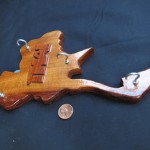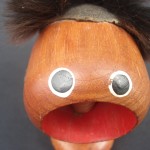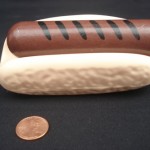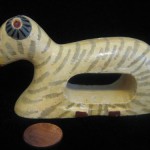So far, we’ve published 200 stories here at Significant Objects — the batch of 100 that made up our original experimental inquiry into the nature of value and narrative, and two sequel batches of 50 stories each, benefiting 826 National and Girls Write Now. Most of our data analysis has of course concerned the original stories and auctions from v1, but it seems reasonable to broadly compare our first 100 stories to our second 100.
The big picture is pretty clear from the, uh, big picture, above: Prices rose smartly.
Objects sold in v1 were valued by the free market (meaning thrift store and yard sale sellers) at a total of $128.74. After our contributing writers converted these thingamabobs, via invented back stories, into Significant Objects, they sold through our eBay shop for a grand total of $3,612.51. The second 100 objects (v2 and v3 combined) were purchased for $134.89, and sold for $3,992.93
Despite the slightly higher cost-of-doodads, the Significance Premium also increased: v1 objects rose in value by a total of 2,706% thanks to our contributors’ stories. The second 100 objects sold in v2 and v3 combined jumped in value by 2,860%.
And on a per-object average (arithmetic mean) basis? The chart would obviously look identical, but the salient fact is that while the cost-of-doodads rose about 4.7% (from $1.29 to $1.35), the post-Significance auction price jumped about 10.5% (from $36.13 to $39.93).
All of which is interesting because a very plausible case could have been made that prices would fall as we sold our second 100 object-stories, because of our old friends supply and demand: After all, the number of Significant Objects existing in the world doubled.
Obviously we’re pleased that prices, instead, rose. We’re interested to hear your theories about why that is.
Here are some possible factors that we can think of:
1. The Charity Effect. Buyers knew that our v2 and v3 objects were being sold to support excellent causes.
2. Various-Creative-Stunt Effects. With our experimental phase behind us, the curators felt less pressured to maintain uniformity across auction scenarios, and freed up to try novel approaches to teasing out the deeper questions about the relationship between stories and things through variations on our original idea that clearly captured readers’ (and bidders’) imagination: the Mystery Object, a hand-written story, a multi-part story, multiple stories about identical objects, team-ups with Underwater New York (involving found objects), Electric Literature, The Believer, Paola Antonelli, and so on. This makes our v2 and v3 data somewhat more difficult to assess — but so what? All that stuff was awesome!
3. Lingering echoes of the Duration Factor: Our first week or two of auctions (in v1 of course) had somewhat lower prices, as fewer people had heard about the project at that stage. Josh offered this method of correcting for the Duration Factor in v1 prices; it seems likely that this had no impact on v2 and v3 prices, but it probably did undercut v1 totals a bit.
What else? You tell us, readers!





